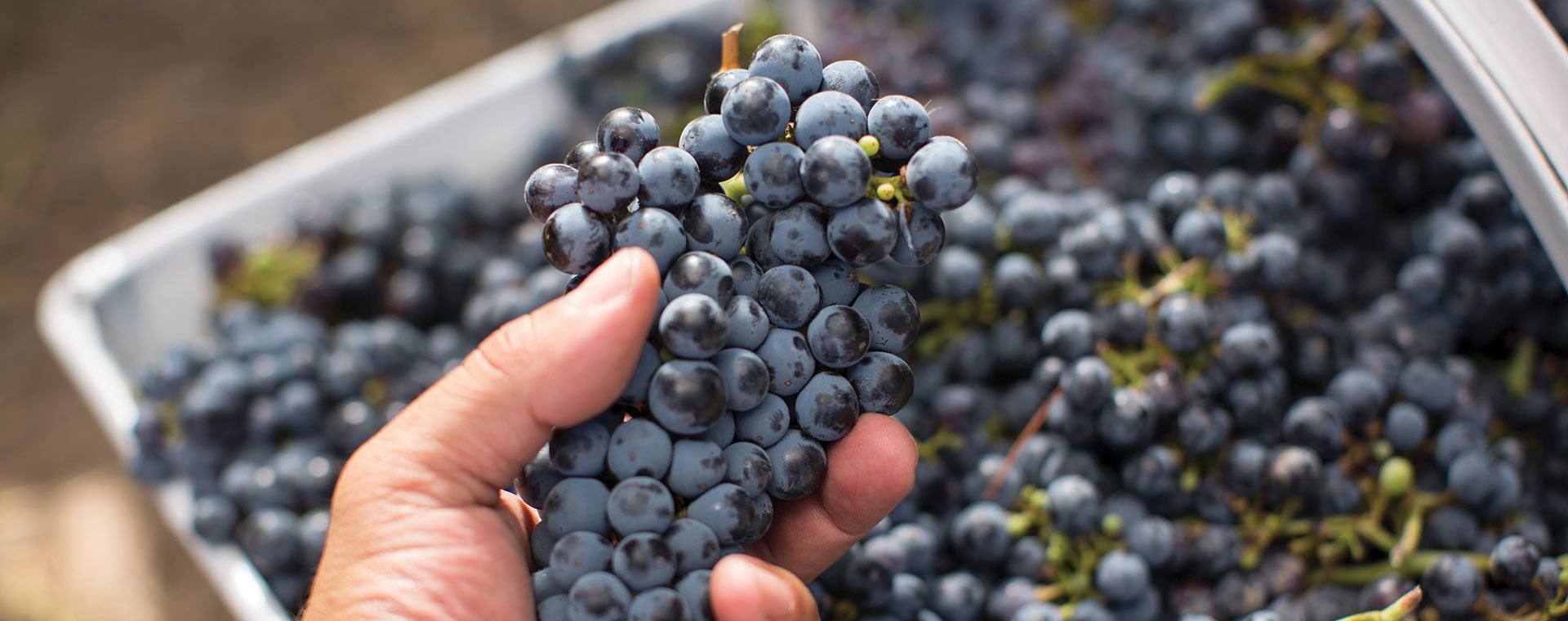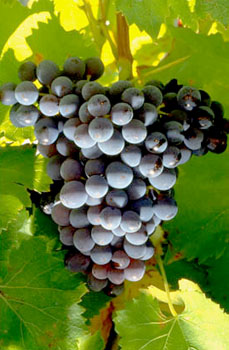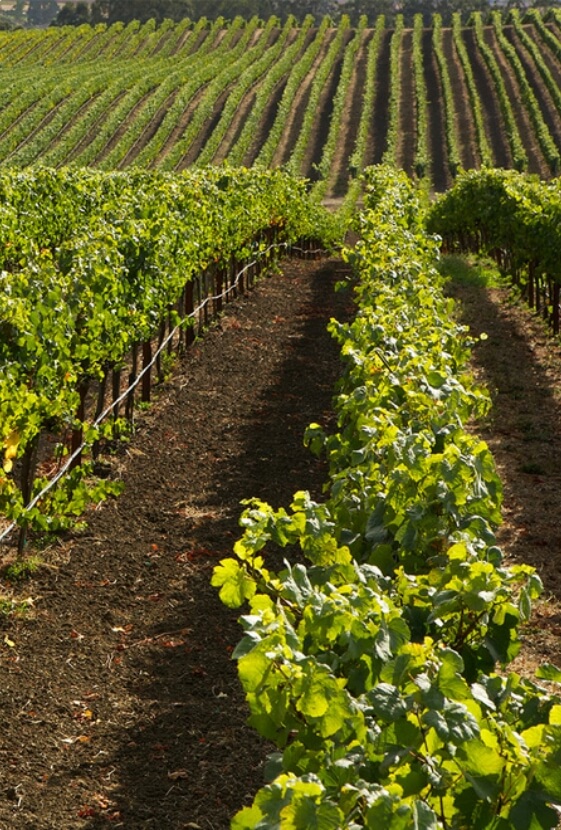
Grape Glossary
Grenache is often blended with other varieties for structure and balance, but also makes exceptional reds and rosés on its own.
In Rioja and much of the rest of Spain, Grenache is usually blended with Tempranillo. In Priorato, Grenache may have found its highest expression. The unique, black-gold striated slate and quartz soils, called llicorella, combined with drip irrigation and finely tuned winemaking, result in dense, black, powerful wines that have risen to cult status.
In the southern Rhône Valley, blended with Syrah, Mourvèdre, Cinsault and 10 other varieties, Grenache is the backbone of numerous red wines, including Châteauneuf-du-Pape, Gigondas, Vaqueyras, Côtes-du-Rhône-Villages and Côtes-du-Rhône; it is also the principal grape in the rosés of Tavel and Lirac.
Stressful conditions help control Grenache’s high vigor and productivity, which unrestricted result in thin, pale wines. It thrives in a harsh, hot, arid, windy climate and stony, baked soils. It is low in acid, moderately low in tannin and susceptible to mildew, rot and coulure (the failure of the flowers to develop into berries).
Native to Spain, the vine is believed to have originated in the Aragón province of northern Spain, where it is known as Garnacha, and then spread to Rioja and across the Pyrenees into southern France, eventually reaching the Rhône Valley. Grenache is widely planted throughout the Mediterranean basin and is the second most widely planted grape in the world. Other than France and Spain, it is found in Italy, Tunisia, Australia, California, Greece, Chile and South Africa.

